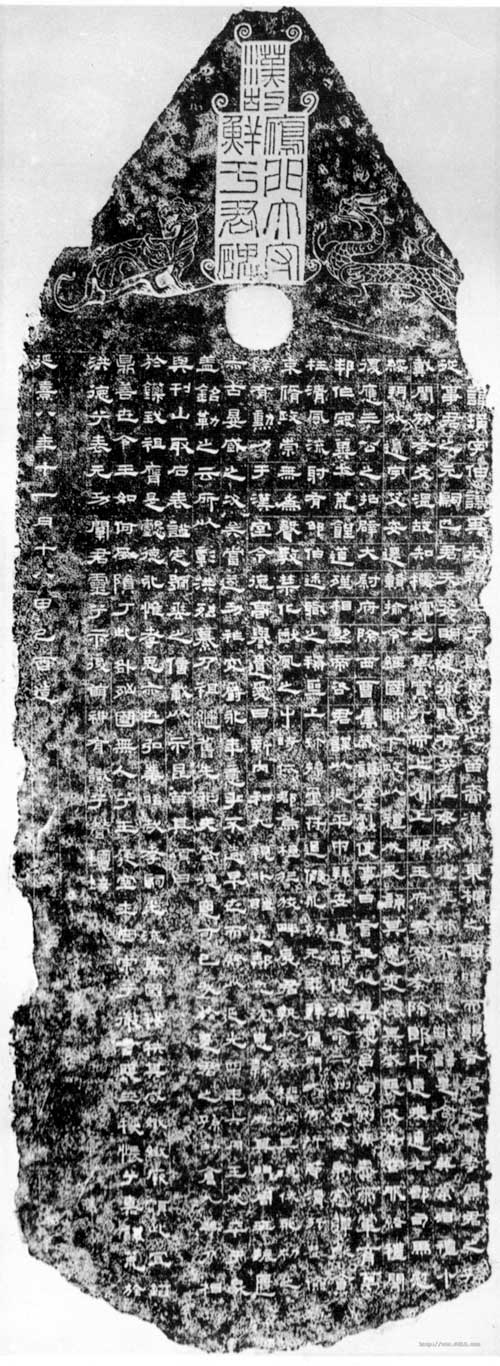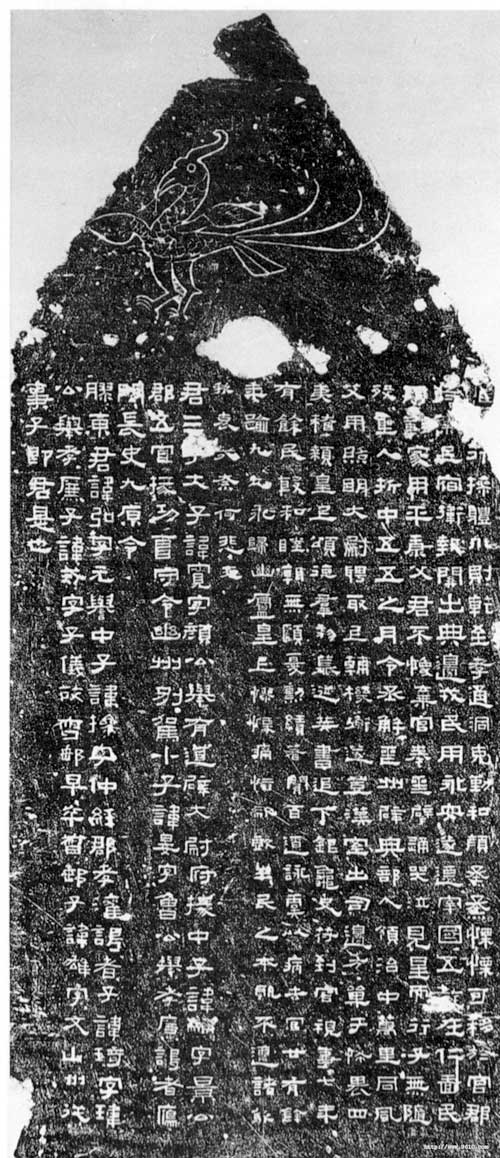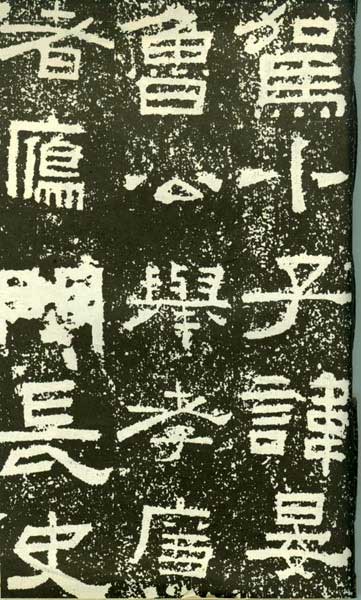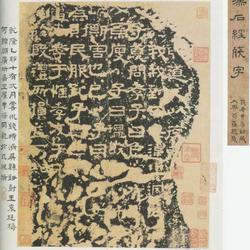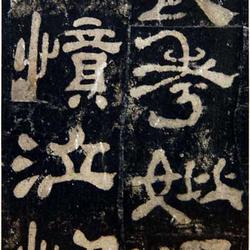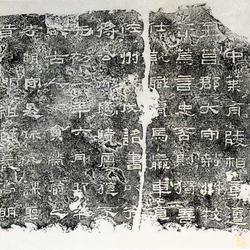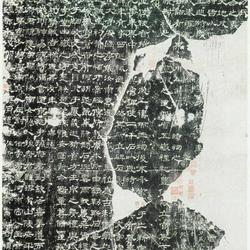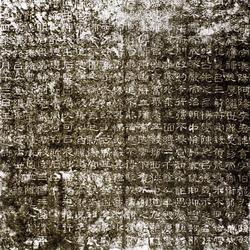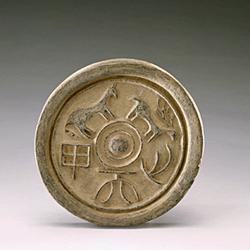In May 1973, an Eastern Han Dynasty stele was unearthed in Gaocun, Wuqing County, Tianjin City. There is a portrait on the head of the stele, and a Chinese seal inscription on the forehead of the stele, which reads: "The stele of Xianyu Jun, the prefect of Yanmen in the Eastern Han Dynasty." It is commonly known as "Xianyuhuang Monument". There are eight hundred and twenty-seven characters in Bei Yang and Bei Yin. The monument was erected in the eighth year of Yanxi reign of the Eastern Han Dynasty (AD 165).
In 1979, the Cultural Relics Publishing House first published the "First Rubbing" preserved by the Tianjin History Museum, which immediately caused a sensation in the calligraphy world and was considered to be the only comparable Han stele since the "Zhang Qian Stele" was unearthed in the Ming Dynasty. .
Looking at "Xianyuhuang Stele", it is easy to think of "Zhang Qian Stele". This synesthesia is probably due to the fact that the fonts of these two inscriptions are mostly square and hard. However, when people appreciate "Xianyu Huangbei" carefully, they will find that it also has its own strong personality. The strokes of "Xianyu Huang Stele" are rich and full, with smooth waves, and the horizontal strokes feel slightly thicker than the vertical strokes. The yang characters on the stele are mostly flat and square, while the yin characters on the stele are flat and long, with square phases appearing alternately, and the shape changes are very vivid. In addition, sometimes the center of gravity is raised high and spread out below, sometimes the center of gravity is low, showing a solid shape, and sometimes the center of gravity is biased, either to the left or right, and the momentum changes in subtle ways, which is full of fun. In addition, the wave picks of "Xianyu Huangbei" are also unique. Many horizontal waves are thick and twisted and have an upturned shape, which adds a sense of humor.
Because "Xianyu Huang Stele" is the first inscription, the handwriting is clear and very precious. However, when writing, you must also be good at identifying and figuring out which strokes are at the beginning of the strokes carved by the craftsman. Don't confuse the broad and square appearance with the round and round inner strokes, let alone follow the same pattern and make the beginning of the strokes square. If you look closely, you will find that the monument uses center strokes everywhere, and although the turning points are mostly at right angles, the subtle and rich feeling of this monument cannot be expressed without the use of center strokes.
Although the yin and yang of "Xianyuhuang Stele" are from the same person, the yin of the stele has greater changes, magnanimity, and more distinctive style. In addition to the majestic styles of "Xi Niao", "Yong Pavilion" and "Zhang Qian", it also shows an elegant and magnificent appearance.
